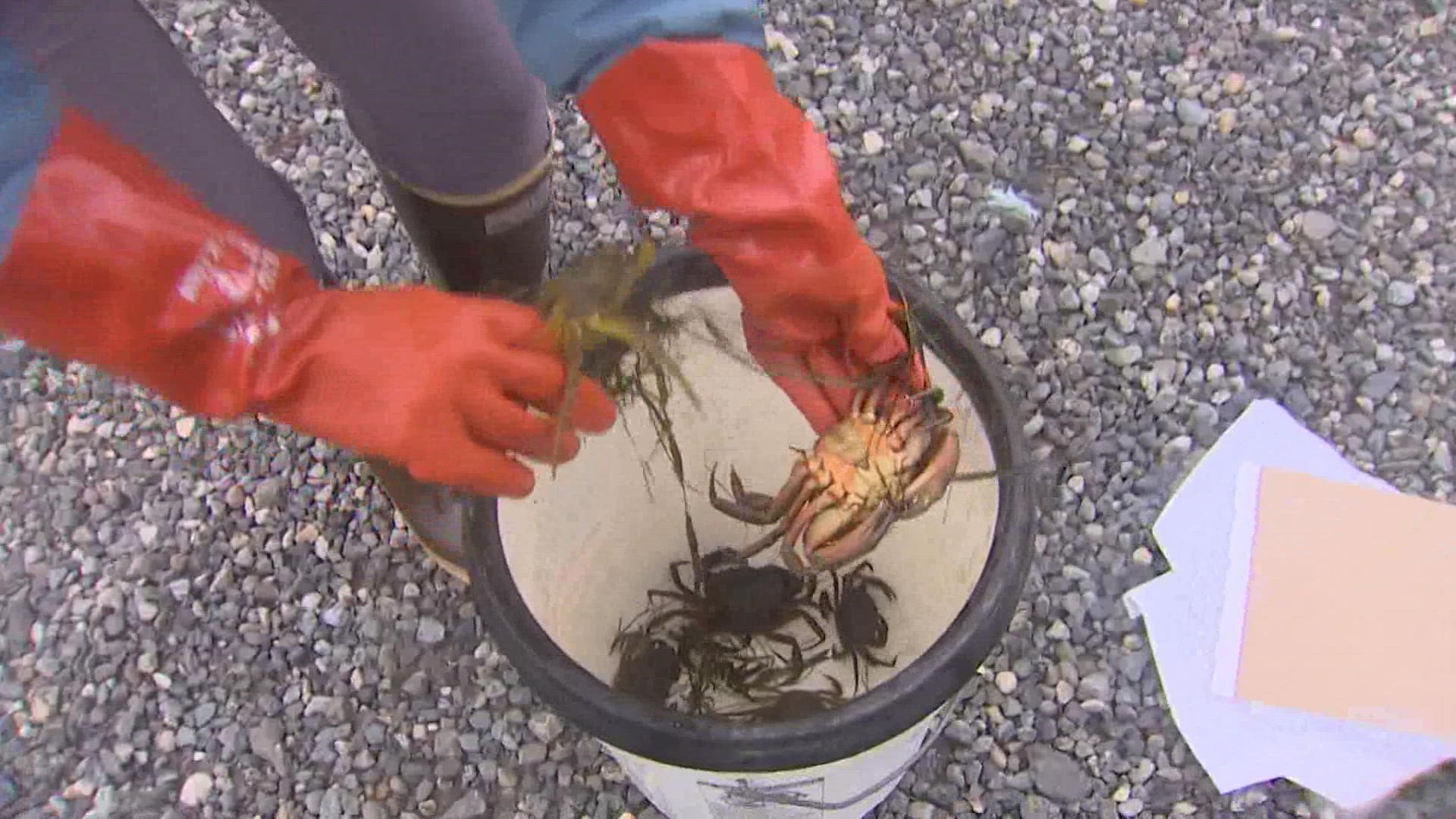KITSAP COUNTY, Wash — Volunteers captured a male European green crab near Seabeck in Kitsap County, marking the first time the invasive species has been found in the Hood Canal, the Washington Department of Fish and Wildlife (WDFW) confirmed Thursday.
The crab was found in Nick's Lagoon near Seabeck in Kitsap County by volunteers with the Washington Sea Grant's "Crab Team," a 55-site network monitored by volunteers and several agencies in the Salish Sea aimed to help detect the presence of invasive crabs early.
It is the furthest south the invasive crabs have been confirmed in the Salish Sea to date, according to WDFW.
Emily Grason, Washington Sea Grant marine ecologist and Crab Team lead, estimates the male crab arrived at Nick's Lagoon last year.
“This group of steadfast volunteers has never missed a month in the mud and they are literally our eyes in areas managers don’t always have the capacity to monitor regularly," Grason said.
In response to the latest crab finding, the state wildlife agency will scale up its traps in the area for the next few days to identify the presence of the invasive species.
The WDFW urges area residents, anglers and others to not tamper with European green crab traps, which are typically deployed in shallow areas exposed at low tide. A bright orange buoy and an official tag or permit outfit these crab traps.
If a member of the public finds a suspected European green crab or its shell in Washington, they are asked to take a picture and report it as soon as possible. WDFW is not asking the public to keep or kill suspected green crabs because they can be mistaken identification of native crabs.
Devastating impacts on Washington state
The Lummi Indian Business Council declared a disaster Nov. 23, 2021 after more than 70,000 European green crabs were captured and removed from the Lummi Sea Pond.
In fall 2019 the invasive crabs were first discovered on Lummi Reservation tidelands in fall 2019. The Tribe said more than a dozen were captured in 2019 and hundreds were captured in 2020 before the population exploded in 2021.
A majority of the 70,000 crabs removed from the sea pond in 2021 were captured between September and October.
Governor Jay Inslee issued an emergency order Jan. 19, directing the WDFW to implement emergency measures to eradicate the European green crab and keep the species from becoming permanently established in Washington state.
WDFW Director Kelly Susewind asked for over $8 million in additional funding to eradicate the European green crabs form the state. Department leaders said the $2.3 million previously earmarked in the state's budget for green crab management was not enough.
In his letter to the governor, Susewind said if the green crab's population expands beyond the department's ability to stop them from becoming established in the Salish Sea, the costs of control, mitigation and loss of commercial and recreational fishing resources may rise to hundreds of millions of dollars.
More on the European green crab
Wildlife officials called the European green crab (Carcinus maenas) a "globally damaging invasive species that poses a threat to native shellfish, eelgrass, and estuary habitat critical for salmon and many other species."
These green crabs prey upon young oysters, consuming as many as 40 half-inch clams a day, and can eat crabs its own size, according to the WDFW. The crabs are known to destroy critical habitats like eelgrass beds, estuary marshes in addition to negatively impacting salmon and Southern Resident killer whale recovery.
What differentiates the European green crab from native helmet crabs or hairy shore crabs is its five spines or teeth on each side of the shell. Here is a crab identification guide from the WDFW.

